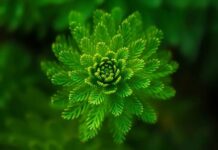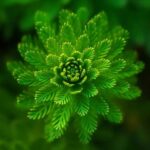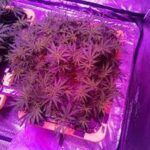Can Any LED Light Be Used As A Grow Light?
There are many LED grow light options on the market, but not all of them will work for growing plants. To be effective, an LED grows light needs to have a specific spectrum that is conducive to plant growth.
Most LED grow lights on the market are designed to emit wavelengths in the blue and red spectrums, which are optimal for photosynthesis.
Some LED lights that are marketed as “grow lights” may not have the proper spectrum for plant growth. It is important to do your research before purchasing an LED grow light, so you can be sure that it will be effective for your gardening needs.
Can I use any type of LED?
Table of Contents
Not all LEDs are created equal – some LEDs are better suited for use as grow lights than others. In general, LEDs that emit a higher amount of blue light are better for growing plants. LEDs that emit more red light are better for flowering plants.
You can use any type of LED in a grow light application, but it is important to choose LEDs that have been specifically designed for this purpose. Non-grow light LEDs may not have the proper spectrum or intensity to support plant growth.
What should I consider when choosing an LED to grow light?
When choosing an LED to grow light, you will need to consider the size and type of plants you plan to grow. Some LED lights are better suited for larger plants, while others are better for smaller plants. You will also need to consider the intensity of the light.
It is important to choose an LED to grow light that has a higher lumen output. This will ensure that your plants receive enough light to thrive. You should also consider the wavelength of the light. LEDs that emit a higher amount of blue light are better for growing plants, while LEDs that emit more red light are better for flowering plants.
Is an LED grow light a good choice for me?
An LED grows light is a great choice for anyone who wants to grow plants indoors. LEDs are efficient and produce little heat, making them the perfect choice for small spaces. They also have a long lifespan, making them a cost-effective option in the long run.
If you are new to gardening, or if you are growing plants in a difficult environment, an LED grows light is a good choice for you. LEDs are perfect for small gardens and can be used to supplement natural sunlight. They are also a great choice for people who want to save energy.
Do all LED lights help plants grow?
No – not all LED lights are created equal. To be effective, an LED grows light needs to have a specific spectrum that is conducive to plant growth. Most LED grow lights on the market are designed to emit wavelengths in the blue and red spectrums, which are optimal for photosynthesis.
Do LED strip lights help plants grow?
LED strip lights can be used to grow plants, but they are not as effective as other types of LED grow lights. In general, LEDs that emit a higher amount of blue light are better for growing plants, while LEDs that emit more red light are better for flowering plants.
What are some of the benefits of using an LED grow light?
Some of the benefits of using an LED grow light include:
– Low heat production – LEDs produce little heat, making them a safe and energy-efficient choice for indoor gardening.
– Long lifespan – LEDs have a long lifespan, which makes them a cost-effective option in the long run.
– Efficient – LEDs are efficient and can save you money on your electricity bill.
– Versatile – LEDs can be used to grow plants in a variety of environments.
If you are interested in starting an indoor garden, an LED grows light is a great investment. They are safe, efficient, and versatile, and they will help your plants thrive.
How do you make a homemade grow light?
Making a homemade LED grow light is a simple process. You will need to purchase some basic supplies, including an LED light strip, a power supply, and some wire.
Once you have these supplies, you can follow these simple steps:
1. Cut the LED light strip to the desired length and attach it to the power supply.
2. Connect the positive and negative wires of the LED light strip to the corresponding wires of the power supply.
3. Twist each wire around a connector until it is secure.
4. Plug in the power supply and turn on the light strip.












